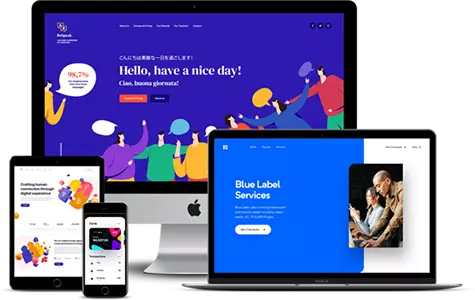Table of Contents
The role of digital is not limited to a certain category of business processes or even certain businesses themselves, for that purpose. Across the globe, industry experts and executives are realising the overall importance of digital in forging an unforgettable customer experiences to win, serve and retain them.
However, many companies still look to their close competitors for them to benchmark their efforts. Some companies still find themselves comfortable to be a leader in the mediocre pack. But your customers expect more.
Customer expectations are the results of increased experiences with leading brands. But, in response, executives talk the talk of digital transformation. While language has become a boardroom staple, there are still many businesses who lack the resources to execute on their ambition and vision.
Brands Are Falling Short Of Customer Expectations
As a brand, one must always look forward to up the ante on their digital efforts to keep pace with customers, who now expect easy, frictionless, and personalized experiences in their moments of need; pertaining to their whims and fancies.
Organizations have prioritized on creating a digital customer experience strategy, and build their digital ecosystem. It has become their primary vehicle to facilitate this.
But the expectations of customers have become a moving target. It is not stationary anymore. Companies find themselves slipping increasingly further behind even after putting significant efforts to catch up.
According to research backed by data, two-thirds of decision makers at enterprises believe addressing rising customer expectations is a high or critical priority, and half of the respondents say that creating a comprehensive strategy for implementing technologies critical to digital transformation is a high or critical business priority.
What Separates The Best From The Rest?
Those who are at the top of the game when it comes to providing an unmatched customer experience, such high performers view experience transformation more as an organizational mindset rather than a series of projects. Such difference in perspective is what instigates the best practices helping them become so successful.
The first thing they do is aligning their senior management. Those high performing CX providers are the ones who have their senior management aligned with precision.
Major organizations look forward to having C-level buy-in which is inevitably foundation to driving transformation. The CEO should be responsible for rallying all of the various functional groups across the entire company toward a shared vision.
CIOs of the past or traditional CIOs, who are under the responsibility of owning the company’s digital tools and technologies, now have their focus aligned towards ‘keeping the lights turned on’ or to be precise, focus on back-end operational processes.
The traditional CMOs who tend to hold customer relationships, have now stronger creative and brand strategy skillets than analytical and operational ones.
A company that has transformed and metastasized, their executives need to shatter the eggshell, breaking out of their silos to collaborate and partner with the right people, ensuring that the front and back of their house are working together in perfect unison which can help redesign their processes in the overall service of the customer.
Get accustomed to a state of flux
If the customer is evolving constantly, interacting with emerging technologies which have reduced their overall time and effort, the evolution of CX also becomes mandatory.
Transformation through the lens of expertise requires preparing the company to pivot into a state of a dynamic analysis and redesign. Digital transformation does not aim at a singular aspect, it is rather omnipotent, which works its way around the entire organization.
More than half of companies around the world will be done with their digital transformation in four years or less. From their backend transformation of the organizational structure, internal hierarchies, managed IT services to the frontend that includes changing the face of of the product, the website or application, carrying out overall facelift with UI/UX design services, digital transformation speaks the language of every aspect.
Do not focus on implementing solutions which can solve discrete issues as they arise, it should be to intentionally plan a business agenda which recognizes the need to break down silos, instigate analytics, and improve constantly.
Harness the power of data with insights
When working in the age of customer, change is rapid. This speed of change can even threaten dominant companies who are not considering for the ways to continuously improve themselves.
As luck may favour, there are digital tools and sophisticated channels which provide companies with a plethora of data regarding their customers and systems which they can turn into business insights.
When a company build a continuous connection to customers, makes the analytical systems to act on the resulting data, and makes use of metrics to evaluate their successes, they can easily boost their knowledge and responsiveness to customers.
Learn to exploit opportunities for a greater digital transformation:
Make your customers engaged to help reinvent their experience. More often than not, digital transformation is driven by organizations who take an inside-out approach. Try and involve your customers directly into your design processes where you can gain critical insights that can help you solve existing issues and anticipate future needs.
You can encourage techniques like ethnography, design thinking, iterative development, and customer co-creation to the front and center of how you engineer new, modern products and solutions.
Conclusion
The overall talent your company has to facilitate transformation and it will most likely come from both inside and outside the organization. As you go forward building up your teams, it becomes imperative that cross-functional goals get aligned ensuring employees get motivated to break down existing silos and work across the functional areas to collaborate and achieve a shared vision.
As an enterprise, you also should be able to able to optimize the metrics. Once you start capturing and reporting on a wide variety of metrics, it will be immensely helpful. Examine in depth and understand your metric behaviors, interrelationships, and priorities which will aid you in creating a reliable scale that can measure overall CX success for your organization.










































